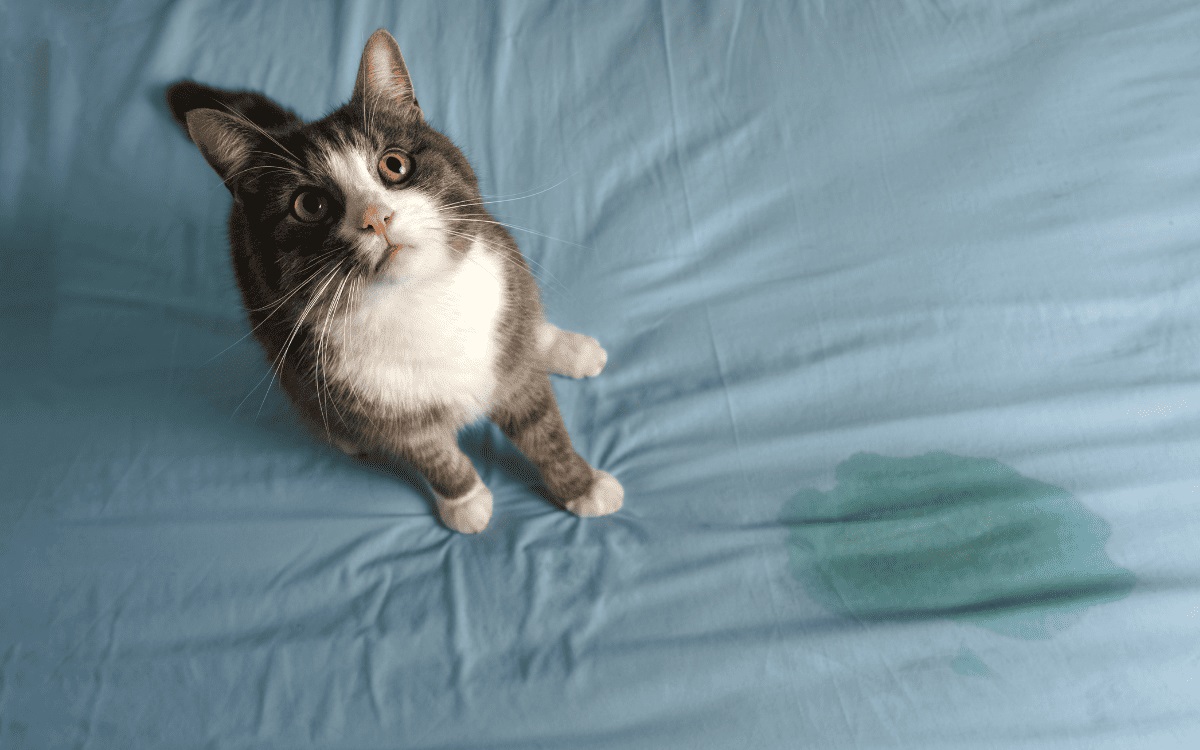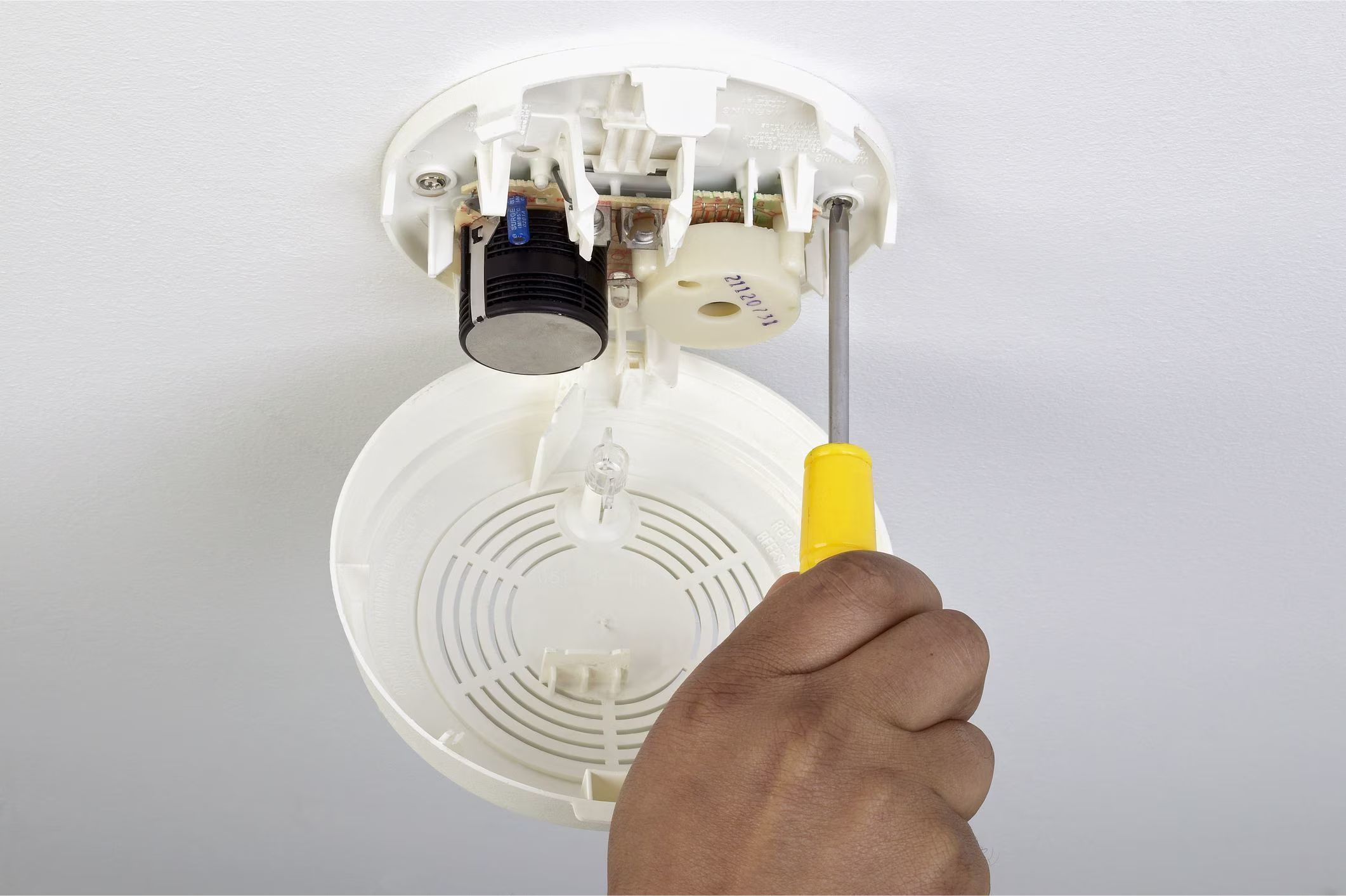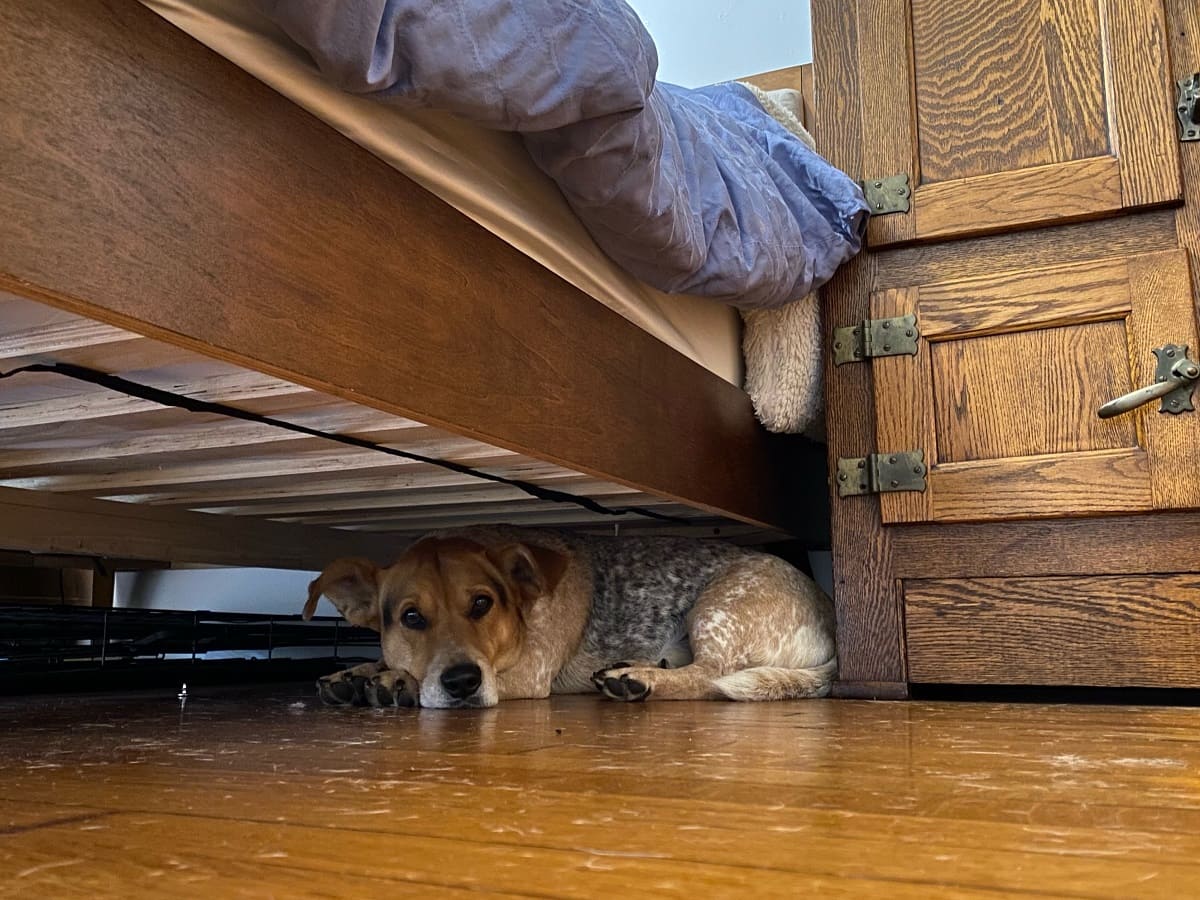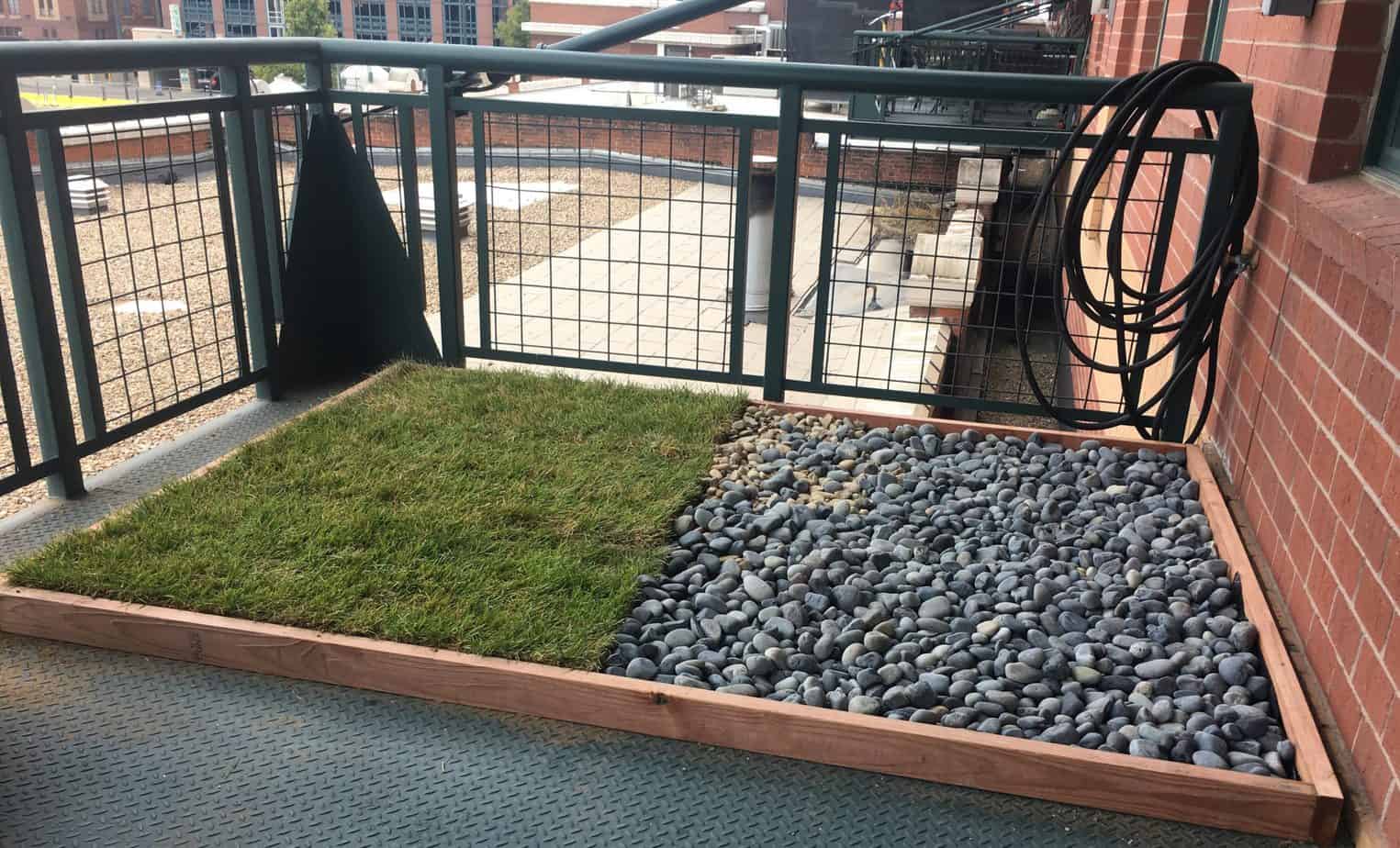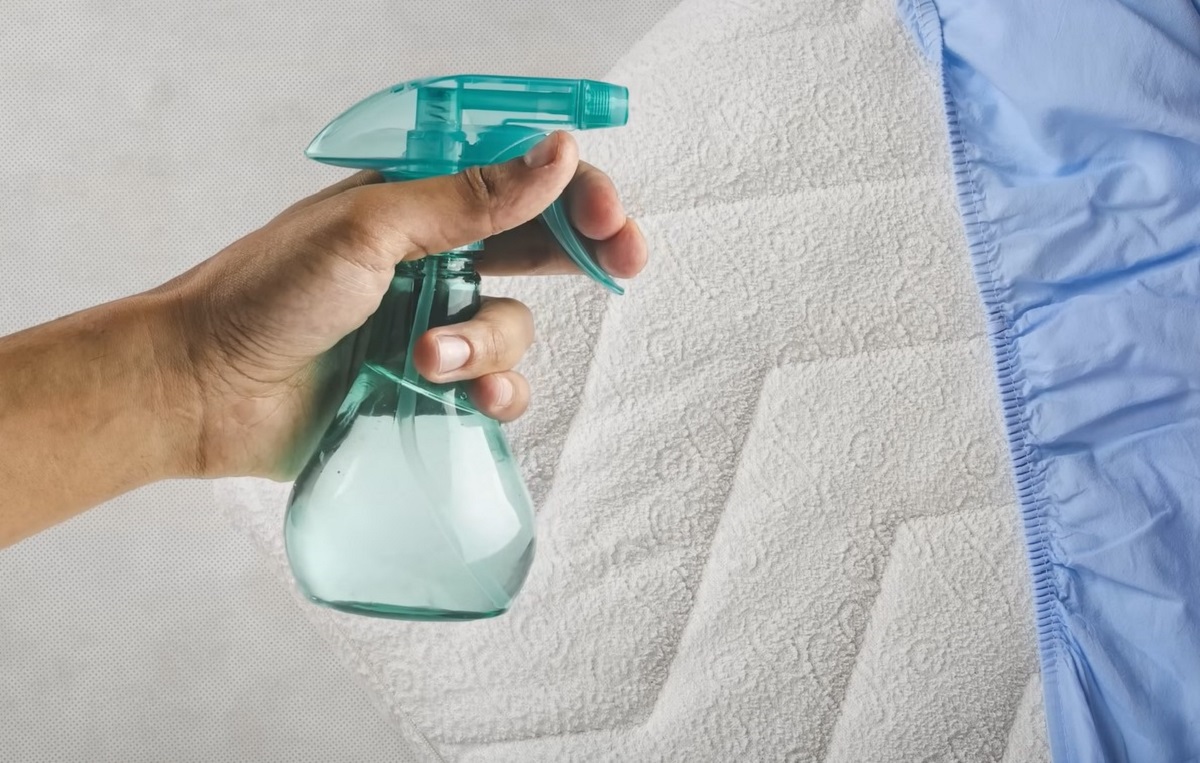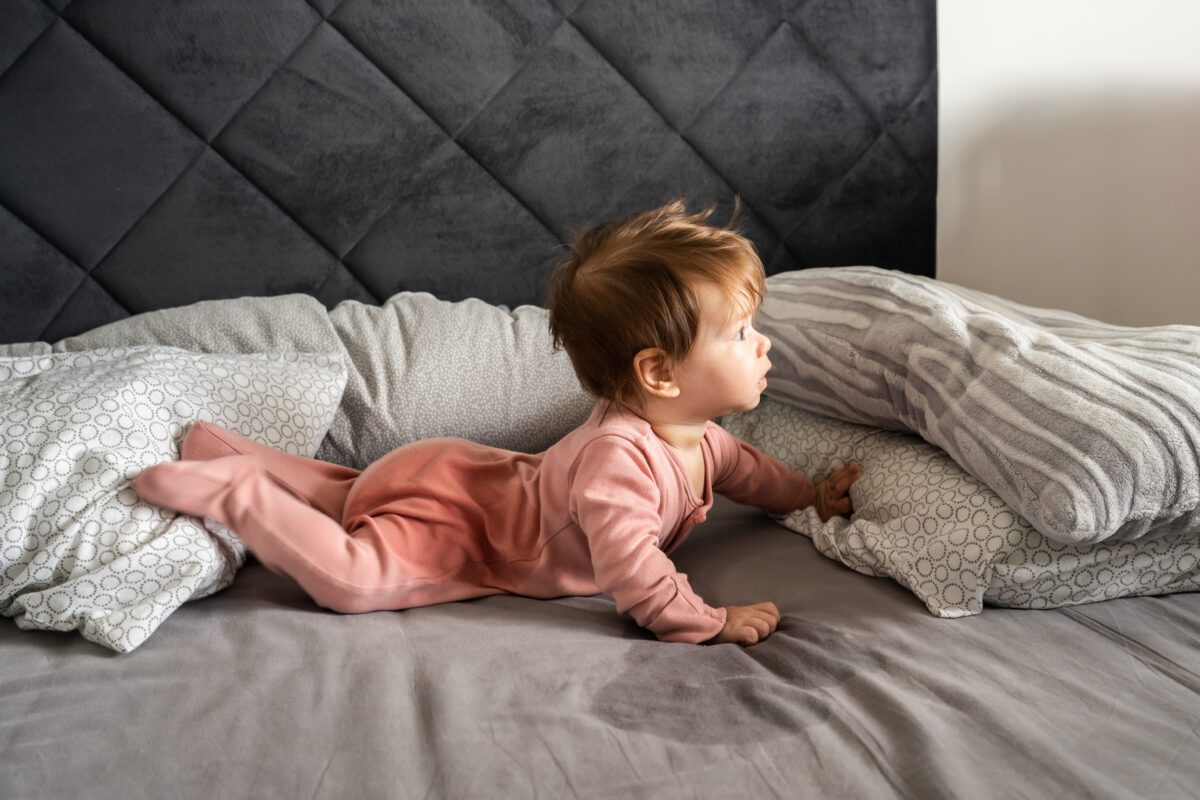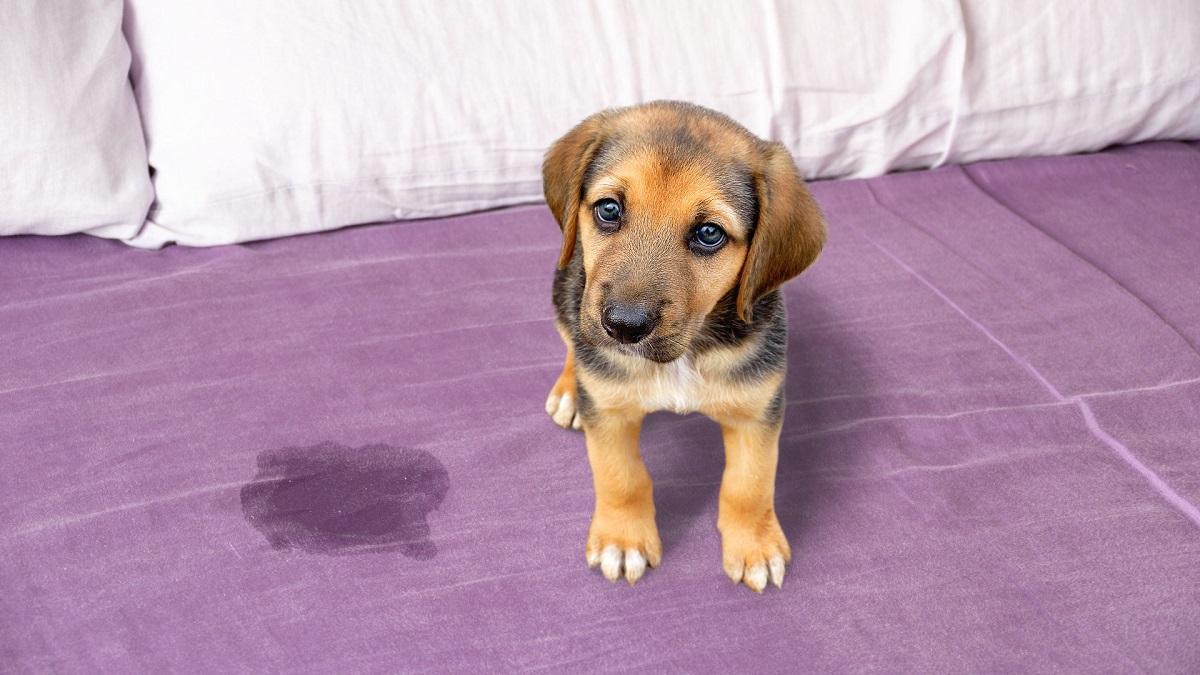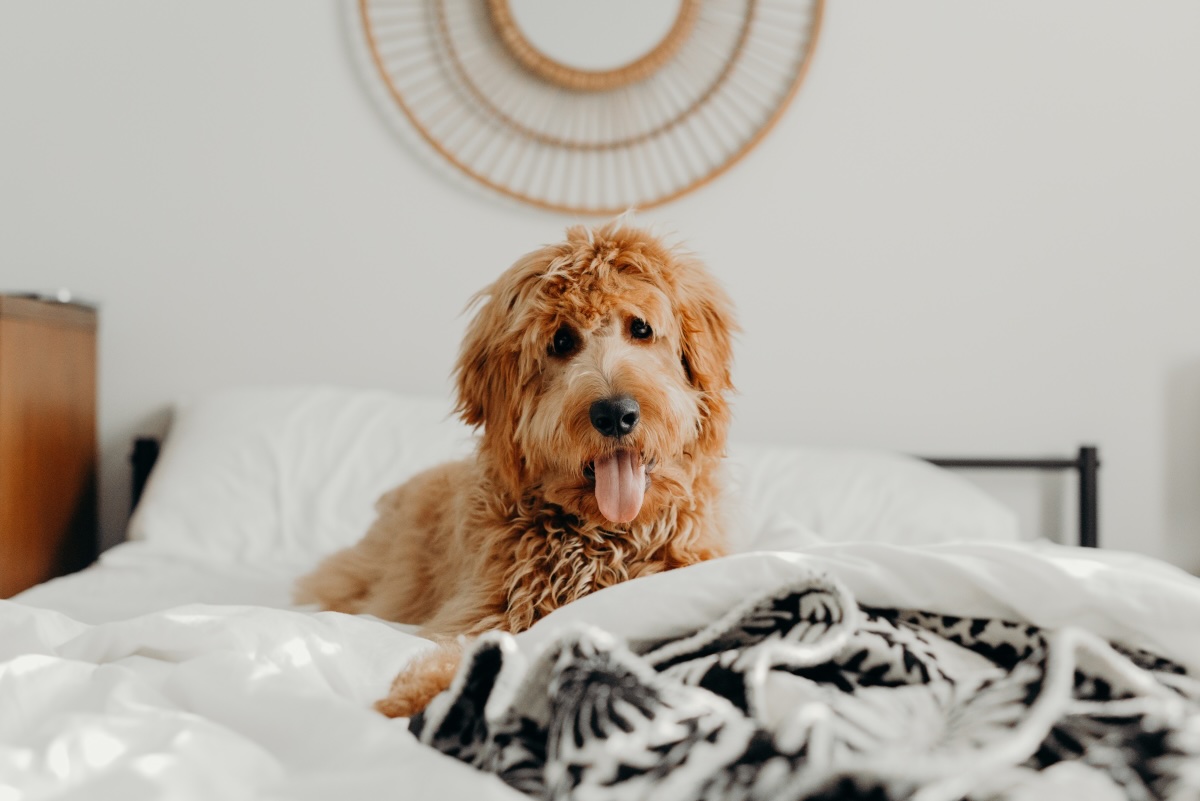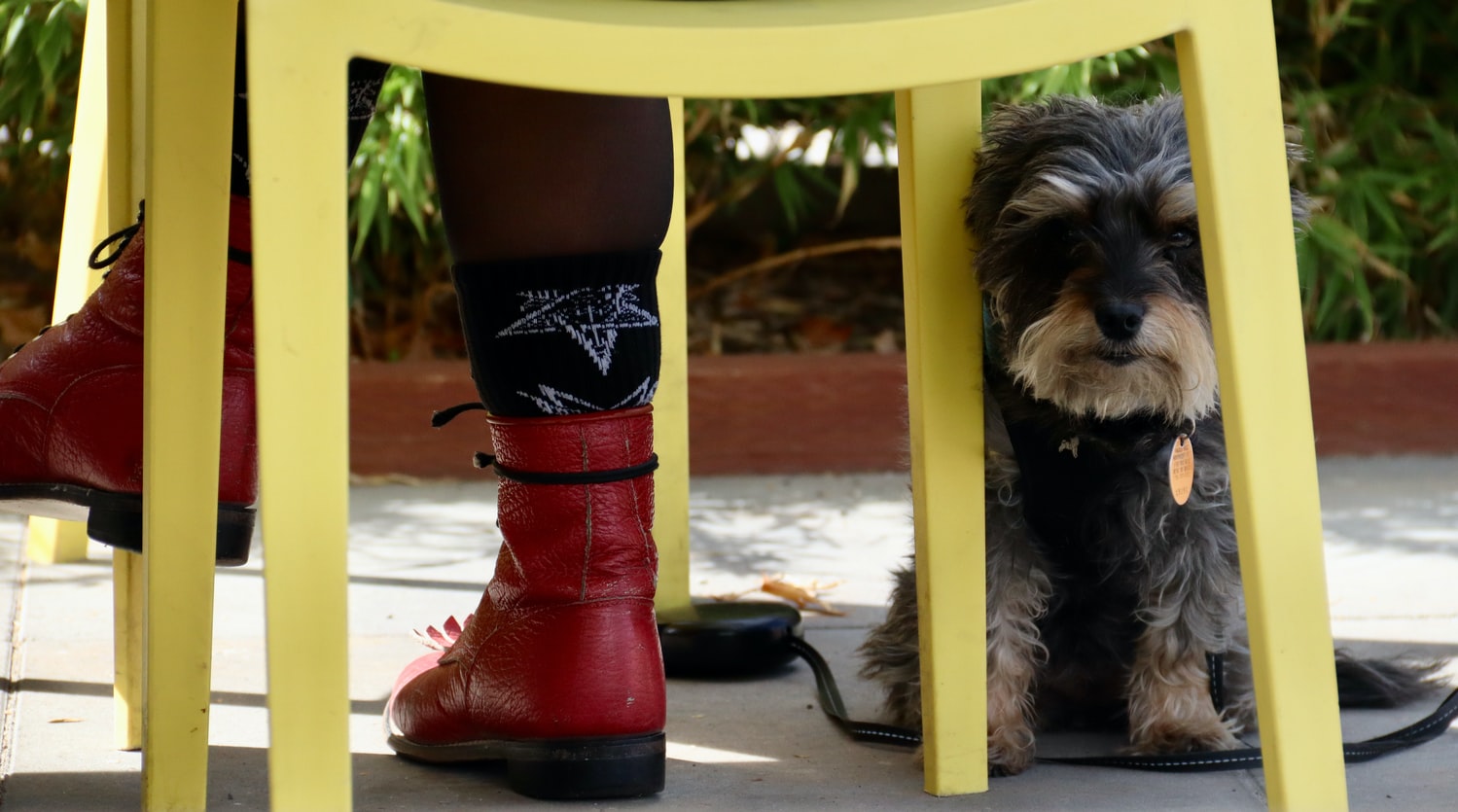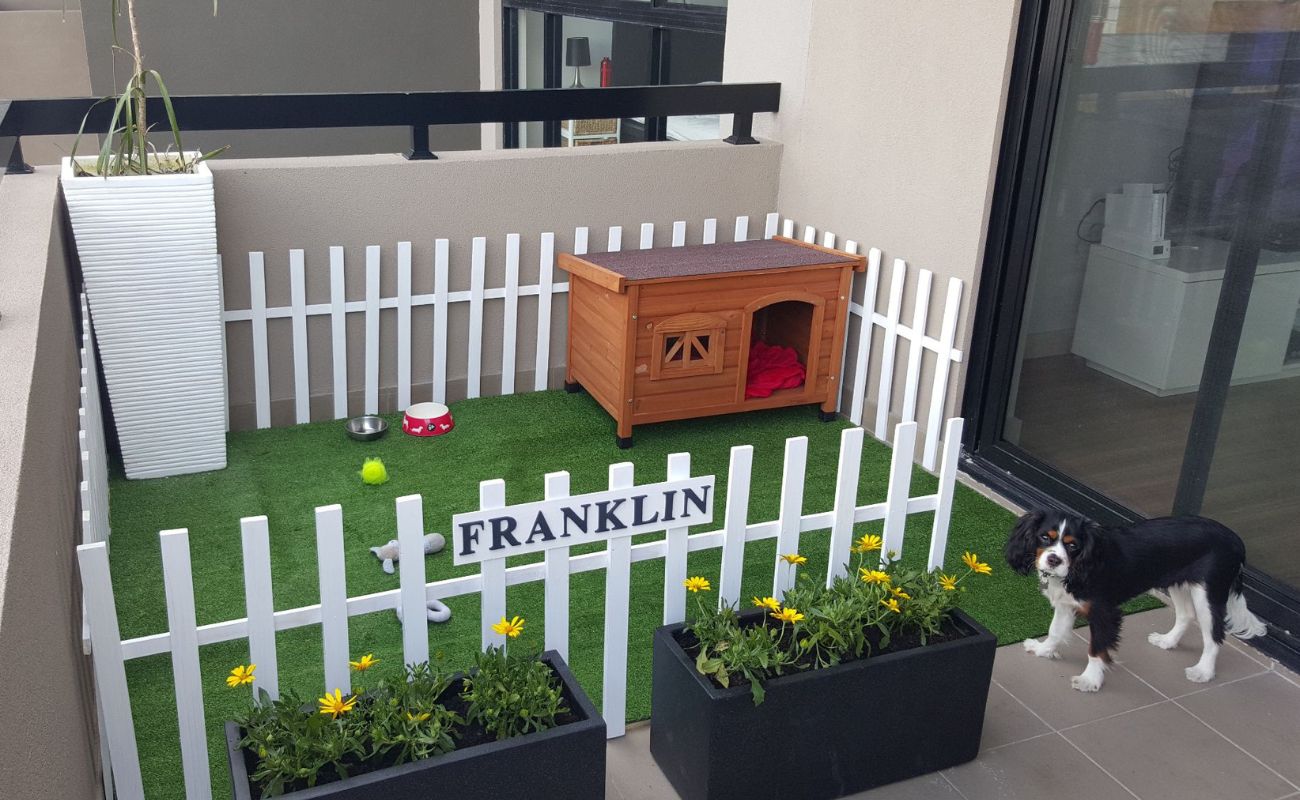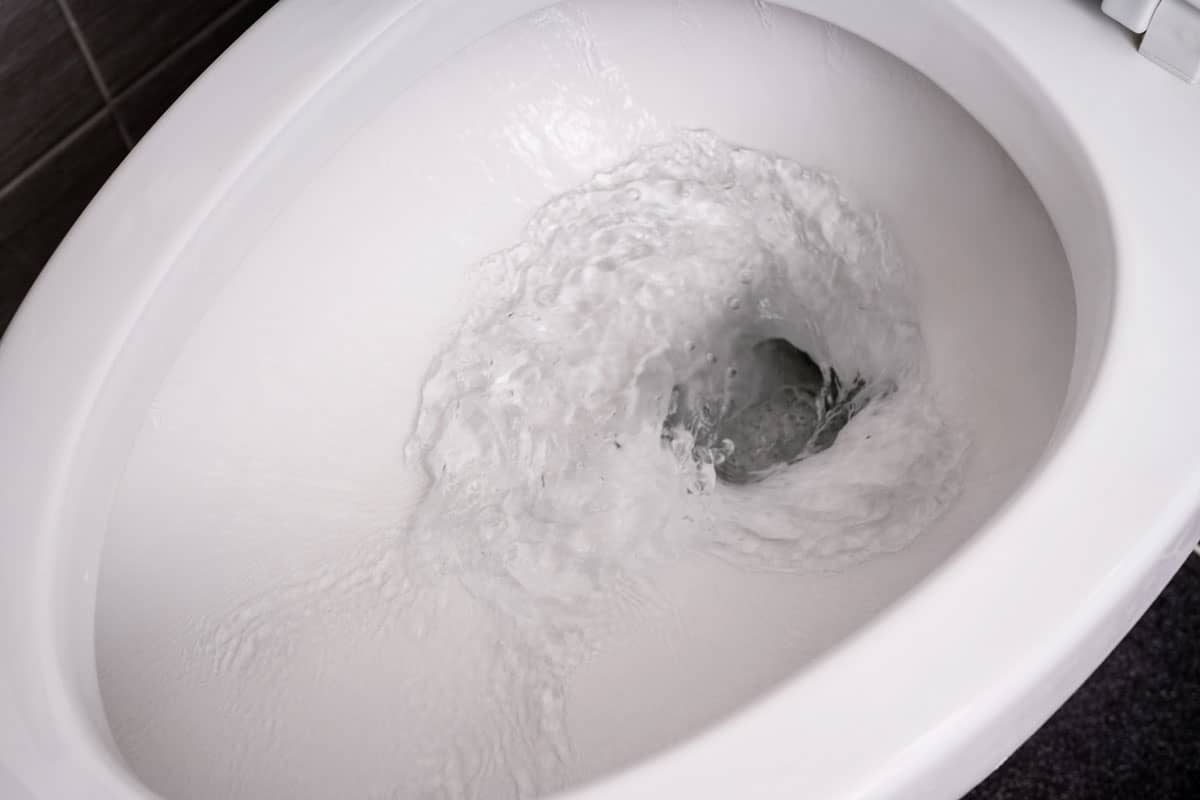Home>Furniture>Bedroom Furniture>Why Would A Dog Pee On Your Bed
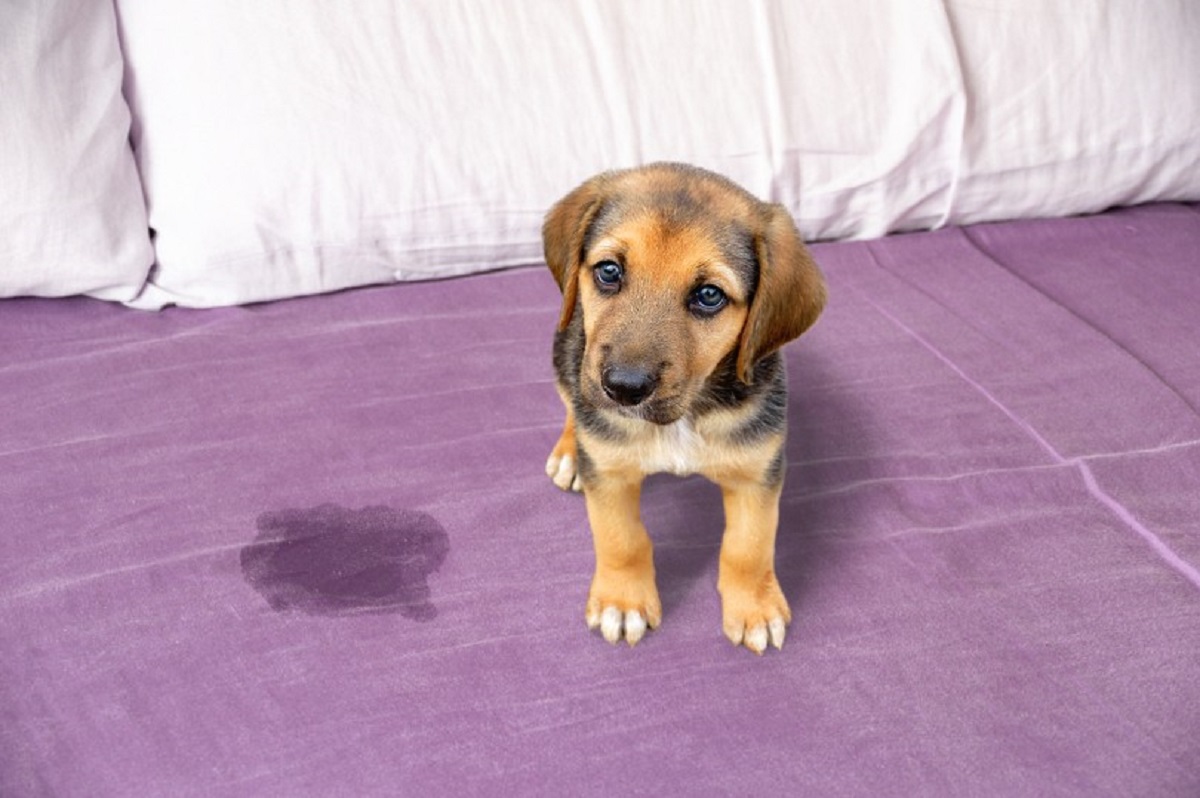

Bedroom Furniture
Why Would A Dog Pee On Your Bed
Published: December 7, 2023
Discover why dogs sometimes pee on your bed and how to stop this behavior. Get tips and insights on bedroom furniture and dog training techniques to keep your bed clean and fresh.
(Many of the links in this article redirect to a specific reviewed product. Your purchase of these products through affiliate links helps to generate commission for Storables.com, at no extra cost. Learn more)
Introduction
Have you ever walked into your bedroom, only to be greeted by the unpleasant and frustrating sight of a wet spot on your bed? It’s not only a nuisance but can also leave you wondering why on earth your beloved canine companion would choose such an inappropriate place for their bathroom needs. While it may seem baffling, there are several reasons why a dog might pee on your bed.
Understanding the behavior behind this unwanted habit is the first step towards addressing the issue effectively. In this article, we will explore the various medical and behavioral causes that can lead to a dog peeing on your bed. By gaining insight into these reasons, you can take proactive measures to prevent this behavior and maintain a clean and comfortable sleeping environment.
Key Takeaways:
- Understanding the reasons behind your dog’s bed-wetting behavior, whether medical or behavioral, is crucial for effective prevention and training. Consistency, patience, and positive reinforcement are key in addressing this issue.
- Consulting a veterinarian is essential to rule out medical conditions and receive tailored behavioral advice for preventing your dog from peeing on the bed. Establishing a consistent routine and using positive reinforcement are effective strategies for promoting good bathroom habits.
Understanding the Behavior
Dogs are generally considered to be clean animals that prefer to eliminate their waste in designated areas, such as outdoors or in a designated indoor spot like a pee pad or litter box. So, when a dog starts peeing on your bed, it’s essential to investigate the underlying reasons behind this behavior.
There are two main categories of causes to consider: medical and behavioral. Medical causes can include urinary tract infections, bladder stones, or other health issues that affect a dog’s ability to control their bladder. On the other hand, behavioral causes can stem from territory marking, fear or anxiety, submissive behavior, or general inappropriate elimination habits.
By understanding these potential causes, pet owners can take appropriate steps to address the issue and help their furry friends avoid peeing on the bed.
Medical Causes
In some cases, a dog peeing on your bed might be a result of underlying medical conditions. It’s important to rule out any health issues that could be causing this behavior. Here are a few medical causes to consider:
- Urinary Tract Infections (UTIs): UTIs can cause a dog to feel the urge to urinate frequently, leading to accidents on the bed. Signs of a UTI can include frequent urination, straining to urinate, blood in the urine, and discomfort during urination.
- Bladder Stones: Bladder stones can develop in a dog’s urinary tract and cause pain and discomfort while urinating. This can lead to accidents on the bed as the dog may associate the pain with the act of urinating.
- Incontinence: Incontinence refers to the inability to control the bladder’s function, leading to involuntary urination. This can be caused by weakened bladder muscles or hormonal imbalances, and it is more common in older dogs and spayed females.
- Diabetes: Dogs with diabetes may experience increased thirst and urination, which can result in accidents on the bed. Other signs of diabetes can include weight loss, increased hunger, and lethargy.
If you suspect that your dog’s bed-wetting behavior is due to a medical issue, it’s crucial to consult with a veterinarian. They can perform a thorough examination, conduct any necessary tests, and provide a proper diagnosis. Treating the underlying medical condition may help resolve the bed-wetting problem.
Behavioral Causes
When medical causes have been ruled out or addressed, it’s time to explore the behavioral causes behind a dog peeing on the bed. Understanding these causes can help you implement effective strategies to modify your dog’s behavior. Here are some common behavioral causes to consider:
- Territory Marking: Dogs are territorial animals, and they may mark their territory by urinating. If your dog is peeing on your bed, they may be trying to claim the area as their own. This behavior can be more common in intact males, but can also be seen in females.
- Fear or Anxiety: Dogs may urinate on the bed as a response to fear or anxiety. This could be triggered by various factors such as loud noises, visitors, separation anxiety, or changes in the household routine. The act of urinating on the bed can provide a sense of security or comfort for the dog.
- Submissive Behavior: Some dogs may urinate on the bed as a submissive gesture. This typically happens when a dog feels intimidated or wants to show submission to a more dominant individual, whether it’s another dog or a human. Submissive peeing is more common in younger dogs.
- Inappropriate Elimination: Dogs that have not been properly trained or have inconsistent bathroom routines may develop a habit of eliminating in inappropriate places, including the bed. This behavior can be especially common in puppies or rescue dogs that have not yet learned the appropriate toileting habits.
Identifying the specific behavioral cause behind your dog’s bed-wetting is crucial for implementing targeted behavior modification techniques. With patience, consistency, and positive reinforcement, you can encourage your dog to eliminate in appropriate areas and break the habit of peeing on the bed.
Territory Marking
Territory marking is a natural behavior in dogs and is often associated with their instinctual need to establish and defend their territory. When a dog pees on your bed, it can be a sign of their intention to mark that specific area as their own.
This behavior is more commonly observed in intact males, as they have higher levels of testosterone, which can drive them to mark their territory more frequently. However, it is not exclusive to males and can also be seen in females, especially those in heat or exhibiting dominant behaviors.
There are several reasons why a dog may feel compelled to mark their territory on your bed:
- Claiming Ownership: By urinating on the bed, a dog may be attempting to assert their dominance and claim the area as their own. This behavior is often triggered by the presence of unfamiliar scents or changes in the household.
- Response to Intruders: Dogs may mark their territory in response to perceived threats or intruders. This can include other dogs, animals, or even unfamiliar people entering the home. In their minds, marking the bed with their scent serves as a warning to potential intruders.
- Separation Anxiety: Some dogs may mark the bed when they experience separation anxiety. The scent of their urine can provide a sense of comfort and security in their absence. This behavior is often seen in dogs that have a strong attachment to their owners.
To address territory marking, it is essential to establish boundaries and reinforce proper behavior. Here are a few strategies to help discourage your dog from marking your bed:
- Consistent Training: Ensure that your dog receives consistent training on proper bathroom behavior. Reward them for eliminating in designated areas and redirect their attention when they show signs of marking behavior.
- Supervision and Restriction: Limit your dog’s access to the bedroom, especially when you are not able to supervise them. Use baby gates or close the bedroom door to prevent them from entering and marking the bed.
- Clean and Neutralize: Thoroughly clean any areas that have been marked by your dog. Use an enzymatic cleaner specifically designed to eliminate pet odor to remove the scent and discourage future marking in that spot.
- Spay/Neuter: If your dog is not yet spayed or neutered, consider discussing this option with your veterinarian. Spaying or neutering can help reduce hormonal influences and decrease the likelihood of marking behavior.
Remember, patience and consistency are key when addressing territory marking. With the right approach and proper training, you can help your dog understand appropriate boundaries and prevent them from marking your bed.
Read more: Why Does My Dog’s Pee Turn The Grass Yellow
Fear or Anxiety
Fear and anxiety are common emotions experienced by dogs, and these emotions can manifest in various ways, including peeing on the bed. When a dog feels fearful or anxious, they may seek comfort and security by urinating in familiar and safe environments, such as your bed.
There are several triggers that can induce fear or anxiety in dogs and lead to bed-wetting:
- Loud Noises: Thunderstorms, fireworks, or other loud noises can be frightening for dogs. The loud and sudden sounds can trigger a fear response, causing them to urinate on the bed as a coping mechanism.
- Visitor or Stranger Anxiety: Some dogs may feel anxious or intimidated when encountering unfamiliar people or guests in the house. This anxiety can lead to bed-wetting as a response to the stress and discomfort they are experiencing.
- Separation Anxiety: Dogs with separation anxiety may exhibit destructive behavior, including peeing on the bed, when left alone. The anxiety and distress experienced from being separated from their owners can cause them to seek comfort in familiar scents, such as the scent of their urine on the bed.
- Changes in Routine or Environment: Dogs thrive on routine and can become anxious when there are sudden changes in their environment or daily routine. Moving to a new house, introducing a new pet, or even rearranging furniture can create anxiety and lead to bed-wetting.
To help address fear or anxiety-related bed-wetting, consider the following strategies:
- Create a Safe Space: Provide your dog with a designated safe space where they can retreat when feeling scared or anxious. This can be a crate, a specific room, or a cozy bed in a quiet area of the house.
- Implement Desensitization Techniques: Gradually expose your dog to the triggers that cause fear or anxiety, such as loud noises or unfamiliar visitors. Use positive reinforcement and rewards to create positive associations and help them overcome their fears.
- Provide Mental and Physical Stimulation: Engage your dog in regular exercise and mental stimulation to help reduce overall anxiety levels. A tired and stimulated dog is often better equipped to handle stressful situations calmly.
- Consider Professional Help: If your dog’s anxiety is severe or persistent, it may be beneficial to seek the assistance of a professional dog trainer or behaviorist. They can provide personalized guidance and develop a behavior modification plan tailored to your dog’s specific needs.
Remember, creating a calm and supportive environment for your dog is essential. By understanding and addressing the underlying fears and anxieties, you can help your dog feel more secure and reduce the incidence of bed-wetting.
Submissive Behavior
Submissive behavior in dogs is a natural instinct that is often displayed as a way to communicate deference and respect to more dominant individuals or animals. Some dogs may exhibit submissive behavior by urinating on the bed as a gesture of submission. This behavior is often more common in younger dogs who are still learning social cues and hierarchy.
Submissive peeing can occur in various situations, such as when a person approaches or interacts with the dog, during playtime, or when the dog is scolded or reprimanded. The act of urinating is a way for the dog to convey that they are not a threat and are submitting to the more dominant individual.
Here are a few strategies to help address submissive peeing:
- Avoid Punishment: Punishing a dog for submissive urination can worsen the behavior as it reinforces their fear and submissive response. Instead, focus on positive reinforcement and reward-based training to build confidence.
- Control Excitement: Excitable greetings or playtime can trigger submissive peeing. Teach your dog to control their excitement by practicing calm greetings and gradually increasing their exposure to stimuli that may trigger submissive behaviors.
- Use Confidence-Building Exercises: Engage your dog in confidence-building exercises to help them feel more secure and less prone to submissive behavior. This can include obedience training, agility exercises, or interactive play that encourages problem-solving and independence.
- Establish Consistent Boundaries: Dogs thrive in environments with clear boundaries and expectations. Provide consistent rules and training to help your dog understand their position in the household hierarchy, which can reduce the need for submissive behavior.
- Redirect Attention: When you approach or interact with your dog, try to redirect their attention to a toy or a task that allows them to focus on something positive rather than becoming anxious or submissive.
It’s important to remember that submissive peeing is not a deliberate act of defiance but a response to perceived threats or submission. By using positive reinforcement, patience, and consistent training, you can help your dog build confidence and reduce their tendency to engage in submissive urination.
Inappropriate Elimination
Inappropriate elimination refers to the behavior of a dog urinating on the bed or in other areas of the house, regardless of their training or previous bathroom habits. This behavior can be frustrating for pet owners and often indicates a lack of proper house training or a breakdown in established toileting habits.
There are several reasons why a dog may engage in inappropriate elimination:
- Lack of Proper Training: If a dog has not been adequately trained to eliminate in an appropriate spot, such as outdoors or on a designated pee pad, they may resort to eliminating wherever they feel comfortable, including the bed.
- Inconsistent Bathroom Routine: Dogs thrive on routine, and inconsistency in their bathroom schedule can lead to confusion and accidents. If the dog is not provided with regular bathroom breaks, they may resort to using the bed as a convenient alternative.
- Marking Behavior: In some cases, inappropriate elimination on the bed may be a form of territorial marking. Dogs may view the bed as an extension of their territory and use it to leave their scent behind, especially if they detect unfamiliar smells or changes in the household.
- Stress or Anxiety: Dogs may urinate on the bed as a response to stress or anxiety. Changes in the household, separation anxiety, or other environmental stressors can trigger this behavior. The act of eliminating on the bed can provide comfort and familiarity to the dog.
Addressing inappropriate elimination requires a combination of consistent training, routine, and understanding the underlying cause. Here are some strategies to help prevent this behavior:
- Establish a Routine: Set a consistent bathroom schedule for your dog, ensuring they have frequent opportunities to eliminate in appropriate areas. Take them outside or to a designated pee pad regularly, especially after meals, playtime, and waking up from sleep.
- Use Positive Reinforcement: Reward your dog when they eliminate in the appropriate spot. Offer praise, treats, or playtime to reinforce the desired behavior and create positive associations with eliminating in the right place.
- Supervise and Confine: Keep a close eye on your dog, especially during times when accidents are more likely to occur, such as when they show signs of needing to go or when they have access to the bed. Use crates or baby gates to prevent access to the bed or other areas where inappropriate elimination has occurred.
- Properly Clean Affected Areas: Thoroughly clean any areas that have been soiled by your dog’s inappropriate elimination. Use enzymatic cleaners specifically designed to eliminate pet odors to remove any lingering scent that may attract your dog back to that spot.
- Address Underlying Stress or Anxiety: If stress or anxiety is contributing to the inappropriate elimination, work on identifying and addressing the triggers. Provide your dog with a safe and comfortable environment, and consider seeking help from a professional dog trainer or behaviorist for guidance.
Remember, patience and consistency are key when addressing inappropriate elimination. With a proper routine, training, and understanding of your dog’s needs, you can guide them towards appropriate toilet habits and prevent accidents on the bed.
Ensure your dog has regular bathroom breaks and is not experiencing any medical issues. Provide a comfortable and safe sleeping area to prevent anxiety-related accidents.
Preventive Measures
To prevent your dog from peeing on the bed, it’s crucial to implement preventive measures that address the underlying causes of this behavior. By taking proactive steps, you can maintain a clean and comfortable sleeping environment for both you and your furry friend. Here are some preventive measures to consider:
- Establishing a Routine: Set a consistent routine for your dog’s bathroom breaks. Take them outside or to a designated spot at regular intervals, especially after meals, playtime, and waking up from sleep. This helps them understand when and where it’s appropriate to eliminate.
- Using Positive Reinforcement: Reward your dog with praise, treats, or playtime when they eliminate in the right spot. Positive reinforcement helps reinforce the desired behavior and encourages your dog to continue using the designated areas.
- Providing Adequate Bathroom Breaks: Ensure that your dog has enough opportunities to relieve themselves throughout the day. If you’re unable to let them outside or take them for a walk, consider using a pee pad or creating an indoor potty area for them to use in emergencies.
- Properly Cleaning the Area: If your dog has had an accident on the bed, it’s crucial to thoroughly clean the area to remove any lingering scent. Use an enzymatic cleaner designed for pet odors to eliminate the odor completely, as dogs may be drawn back to the same spot if they can still detect their previous scent.
- Consulting a Veterinarian: If you’ve ruled out behavioral causes and suspect a medical issue contributing to the bed-wetting behavior, consult with a veterinarian. They can perform a thorough examination, run necessary tests, and provide appropriate treatment or recommendations based on the findings.
It’s important to remember that preventive measures require patience, consistency, and positive reinforcement. By creating a clear routine, rewarding your dog for good behavior, and addressing any underlying issues, you can help prevent them from peeing on the bed and maintain a clean and comfortable sleep environment for everyone.
Read more: Why Is My Dogs Pee Killing My Grass
Establishing a Routine
Establishing a consistent routine for your dog is key to preventing accidents on the bed and promoting proper bathroom habits. Dogs thrive on routine and predictability, so providing them with a structured schedule helps them understand when and where it’s appropriate to eliminate. Here are some tips for establishing a routine:
- Set Regular Bathroom Breaks: Determine how often your dog needs to go outside or use the designated bathroom area. This can vary depending on factors such as age, breed, and size. Puppies typically require more frequent bathroom breaks compared to adult dogs.
- Observe Their Bathroom Habits: Pay attention to your dog’s behavior and signs that indicate they need to eliminate. These signs can include pacing, circling, sniffing, or restlessness. By observing their cues, you can anticipate when they need to go and take them to the appropriate spot.
- Consistency is Key: Stick to the same schedule every day, as this helps reinforce the routine and helps your dog understand when it’s time to eliminate. Consistency also minimizes confusion and reduces the likelihood of accidents on the bed or elsewhere in the house.
- Use Cue Words or Phrases: Introduce cue words or phrases that signal to your dog that it’s time to go to the bathroom. For example, you can say “Go potty” or “Do your business” as they eliminate. Over time, your dog will associate these cues with the action of eliminating.
- Supervise and Reward: When taking your dog outside or to the designated bathroom area, supervise them to ensure they eliminate. After they have successfully done so, reward them with praise, treats, or playtime as positive reinforcement. This helps reinforce the desired behavior and encourages them to eliminate at the appropriate times and places.
- Be Patient and Consistent: It may take some time for your dog to adjust to the routine and fully understand what is expected of them. Stay patient and consistent throughout the process, and avoid punishing or scolding them for accidents. Instead, focus on positive reinforcement and redirection towards the appropriate bathroom areas.
Remember, establishing a routine takes time and effort. By providing consistent bathroom breaks, observing your dog’s behavior, and rewarding them for proper elimination, you can prevent accidents on the bed and instill good bathroom habits in your furry companion.
Using Positive Reinforcement
Positive reinforcement is a powerful training technique that can be highly effective in establishing desired behaviors in dogs, including proper bathroom habits. By rewarding your dog for eliminating in the designated areas, you can reinforce the behavior and encourage them to continue doing so. Here’s how to use positive reinforcement to promote good bathroom habits:
- Timing is Key: Timing is crucial when using positive reinforcement. As soon as your dog begins to eliminate in the appropriate area, immediately praise them and offer a reward. This helps them make the connection between the action of eliminating and the positive reinforcement.
- Choose the Right Rewards: Find out what motivates your dog the most. It could be small, soft treats, verbal praise, playtime, or a combination of these rewards. Use high-value rewards when starting out, and gradually transition to less frequent rewards as the behavior becomes more consistent.
- Be Specific with Praise: Use specific praise to let your dog know they are doing the right thing. For example, you can say “Good job” or “Good girl/boy” in an enthusiastic tone. Your dog will associate the praise with the desired behavior and feel encouraged to repeat it.
- Make it a Positive Experience: Ensure that the entire bathroom routine is a positive experience for your dog. Avoid rushing or showing signs of impatience, as this can create stress or anxiety. Stay calm, patient, and supportive throughout the process.
- Consistency is Essential: Be consistent in your use of positive reinforcement. Reward your dog every time they eliminate in the appropriate area, especially in the early stages of training. Consistency helps solidify the connection between the behavior and the reward, making it more likely to be repeated.
- Redirect Mistakes: If your dog has an accident on the bed or in an inappropriate area, avoid punishment or scolding. Instead, gently interrupt the behavior, take them to the designated spot, and praise and reward them when they eliminate there. Redirecting their mistake helps them understand the appropriate place to go.
Using positive reinforcement helps create a positive association with eliminating in the designated areas. It motivates your dog to repeat the desired behavior and strengthens the bond between you and your furry friend. With consistency, patience, and the right rewards, you can effectively encourage good bathroom habits in your dog.
Providing Adequate Bathroom Breaks
Providing your dog with regular and timely bathroom breaks is essential for promoting good bathroom habits and preventing accidents on the bed. Dogs have varying capacities for holding their bladder or bowel movements, depending on their age, size, and overall health. Here are some tips for ensuring your dog gets adequate bathroom breaks:
- Understand Your Dog’s Needs: Different dogs have different bathroom needs. Puppies generally have smaller bladders and shorter holding times, so they will need more frequent bathroom breaks compared to adult dogs. Understanding your dog’s breed, age, and specific needs will help you determine appropriate bathroom break intervals.
- Establish a Schedule: Create a consistent schedule for bathroom breaks throughout the day. Plan regular breaks after meals, playtime, waking up from sleep, and before bedtime. This ensures that your dog has the opportunity to eliminate at appropriate times.
- Recognize the Signs: Pay attention to your dog’s behavior, as they may exhibit signs that indicate they need to go outside or use the designated bathroom area. These signs can include sniffing around, circling, pawing at the door, or whining. Responding promptly to these signs helps prevent accidents and reinforces their understanding of appropriate elimination spots.
- Use Verbal Cues: Introduce a verbal cue that signals to your dog that it’s bathroom break time. For example, you can say “Let’s go potty” or “Time to go outside.” Using a consistent cue helps your dog understand what is expected of them and prepares them for elimination.
- Take Them to the Designated Area: Lead your dog to the designated bathroom spot each time you take them outside. This helps them understand that this particular location is where they should eliminate. Stick to this area consistently to reinforce the association.
- Be Prepared for Longer Periods: If your dog is going to be left alone for longer periods, such as during work hours, consider making arrangements for someone to let them out for a bathroom break or consider utilizing indoor pee pads or a designated indoor potty area to avoid accidents on the bed.
- Monitor Water Intake: Pay attention to your dog’s water intake, especially before bedtime. Limiting their water intake a few hours before sleep can help reduce the need for nighttime bathroom breaks and minimize the risk of accidents during the night.
Remember, providing adequate bathroom breaks is essential for maintaining proper hygiene and preventing accidents on the bed. By understanding your dog’s needs, establishing a schedule, and being attentive to their cues, you can ensure that they have regular opportunities to eliminate in appropriate areas.
Properly Cleaning the Area
When your dog has an accident on the bed, it’s important to properly clean the area to remove any lingering scents and prevent them from being attracted back to that spot. Dogs have a highly sensitive sense of smell, and if they can still detect the scent of urine, they may continue to use the bed as a bathroom area. Here are some steps to ensure the proper cleaning of the affected area:
- Act Promptly: Clean the soiled area as soon as possible to prevent the urine from soaking into the beddings or mattress. The longer the urine sits, the more difficult it becomes to remove the odor completely.
- Blot the Area: Start by blotting up as much of the urine as possible using paper towels or clean cloth. Apply gentle pressure and avoid rubbing, as rubbing can push the urine deeper into the fabric or mattress.
- Use an Enzymatic Cleaner: Enzymatic cleaners are specifically formulated to break down the organic compounds in urine and eliminate the odor effectively. Follow the instructions on the cleaner and apply it generously to the soiled area. Make sure it penetrates deeply into the fabrics or mattress.
- Allow Time to Soak: Enzymatic cleaners typically require some time to work effectively. Give the cleaner enough time to break down the urine molecules. This can range from a few minutes to several hours, depending on the product instructions.
- Blot, Rinse, and Repeat: After the cleaner has had time to work, blot the area again with fresh paper towels or a clean cloth to remove any residual moisture. If possible, rinse the area with water or use a damp cloth to remove any leftover cleaner. Blot dry once more.
- Check for Lingering Odors: Once the area is dry, use your nose to check if there are any lingering odors. If you still detect a faint scent of urine, it may be necessary to repeat the cleaning process or consider using a different cleaner.
- Protect the Bed: To prevent future accidents, consider using a waterproof mattress protector or a removable cover for your bed. These protective layers can be easily washed or replaced, minimizing the risk of urine seeping into the mattress or beddings.
Properly cleaning the area after a dog’s accident is crucial to remove any odor and discourage them from urinating on the bed again. By acting quickly, using an enzymatic cleaner, and ensuring thorough drying, you can successfully eliminate the odor and maintain a clean sleeping environment for both you and your dog.
Read more: Why Do Dogs Dig On The Bed
Consulting a Veterinarian
If your dog continues to pee on the bed despite your efforts to address the behavior, it may be beneficial to consult with a veterinarian. A veterinarian can help determine if there are any underlying medical issues contributing to the bed-wetting behavior. Here’s why consulting a veterinarian is important:
- Rule Out Medical Conditions: Your veterinarian will perform a thorough examination to check for any medical conditions that may be causing or contributing to the bed-wetting behavior. This can include urinary tract infections, bladder stones, incontinence, or hormonal imbalances.
- Provide Proper Diagnosis: If a medical condition is detected, your veterinarian will provide a proper diagnosis and recommend appropriate treatment options. Treating the underlying medical issue can often help alleviate or eliminate the bed-wetting behavior.
- Offer Behavioral Advice: In addition to addressing medical causes, your veterinarian can also provide guidance on behavior modification techniques and strategies tailored to your specific situation. They can offer insights into the underlying behavioral factors contributing to the bed-wetting and suggest effective solutions.
- Recommend Medications or Therapies: In some cases, your veterinarian may prescribe medications or therapies to address the bed-wetting behavior. This can be especially helpful if there are anxiety or stress-related issues contributing to the problem.
- Ensure Overall Well-being: Consulting a veterinarian ensures that your dog’s overall health and well-being are assessed. They can address any other health concerns or provide general advice on maintaining your dog’s physical and mental health.
It’s important to remember that your veterinarian is a valuable resource in understanding and addressing your dog’s bed-wetting behavior. They have the expertise and knowledge to provide proper diagnosis, treatment, and behavioral advice specific to your pet’s needs. Working together with your veterinarian can help you find effective solutions and bring about positive changes in your dog’s bathroom habits.
Conclusion
Dealing with a dog peeing on the bed can be frustrating and puzzling, but understanding the underlying causes is key to addressing the issue effectively. By considering both the medical and behavioral factors associated with this behavior, you can take proactive steps towards preventing your dog from peeing on the bed. Establishing a routine, using positive reinforcement, providing adequate bathroom breaks, properly cleaning the area, and consulting a veterinarian when needed are all essential strategies for tackling this problem.
Medical causes, such as urinary tract infections or incontinence, should be ruled out or addressed by consulting a veterinarian. Behavioral causes, including territory marking, fear or anxiety, submissive behavior, or inappropriate elimination habits, can be addressed through consistent training, behavior modification techniques, and creating a supportive environment for your dog.
Remember to be patient and understanding throughout the process. Dogs rely on our guidance and patience to learn appropriate bathroom habits. Approaching the issue with positivity and consistency will help your dog understand what is expected of them and reinforce good behavior.
In conclusion, preventing your dog from peeing on the bed requires a combination of understanding their needs, implementing effective strategies, and seeking professional guidance when necessary. By taking proactive measures, you can establish a harmonious relationship with your furry friend and maintain a clean and comfortable sleeping environment for both of you.
Frequently Asked Questions about Why Would A Dog Pee On Your Bed
Was this page helpful?
At Storables.com, we guarantee accurate and reliable information. Our content, validated by Expert Board Contributors, is crafted following stringent Editorial Policies. We're committed to providing you with well-researched, expert-backed insights for all your informational needs.
